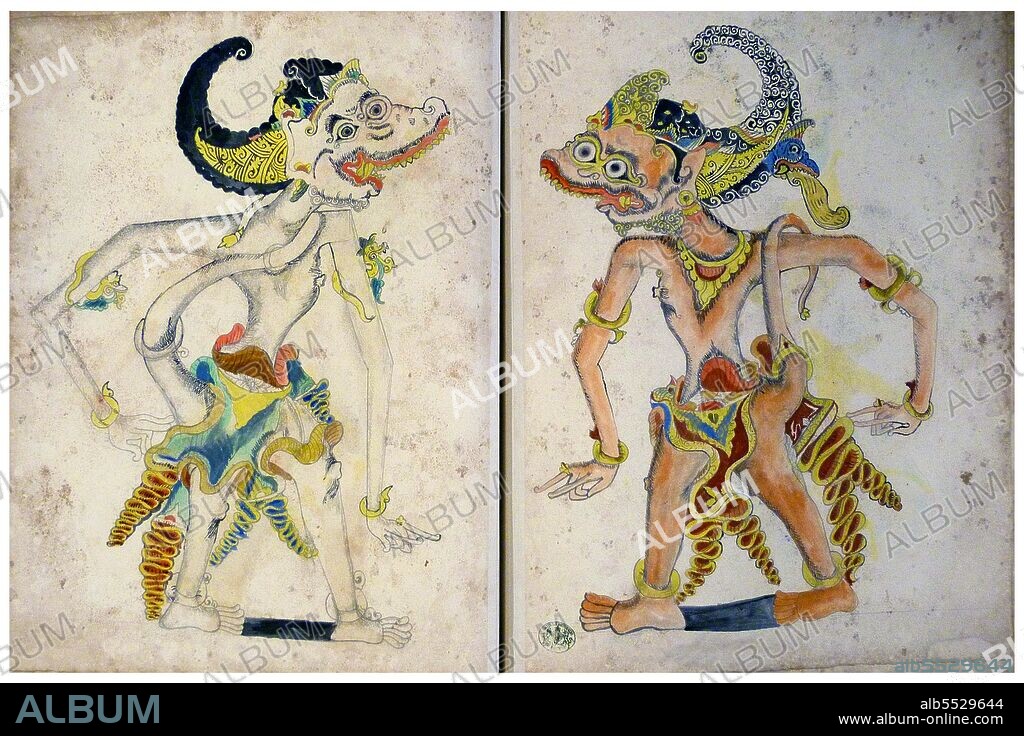alb5529644
Indonesia / Java: Hanuman (left) and Hanuman Tugangga, one of Hanuman’s sons by the Fish Princess (right). From an album of Javanese wayang characters, Java,19th century

|
Add to another lightbox |
|
Add to another lightbox |



Title:
Indonesia / Java: Hanuman (left) and Hanuman Tugangga, one of Hanuman’s sons by the Fish Princess (right). From an album of Javanese wayang characters, Java,19th century
Caption:
The Hindu deity Hanuman is an ardent devotee of Rama, a central character in the Indian epic Ramayana. A general among the vanaras, an ape-like race of forest-dwellers, Hanuman is an incarnation of the divine and a disciple of Lord Sri Rama in the struggle against the demon king Ravana. The Ramayana is an ancient Sanskrit epic. It is ascribed to the Hindu sage Valmiki and forms an important part of the Hindu canon, considered to be based on historical events. The Ramayana depicts the duties of relationships, portraying ideal characters like the ideal servant, the ideal brother, the ideal wife and the ideal king. The Ramayana was already well known in Java by the end of the ninth century CE. The late 18th-century renaissance of literature at the central Javanese courts of Surakarta and Yogyakarta saw the rewriting of the Ramayana Kakawin in modern Javanese.
Credit:
Album / Pictures From History/Universal Images Group
Releases:
Model: No - Property: No
Rights questions?
Rights questions?
Image size:
5100 x 3404 px | 49.7 MB
Print size:
43.2 x 28.8 cm | 17.0 x 11.3 in (300 dpi)
Keywords:
ART • ARTS • ASIA IMAGES • ASIA PICTURES • ASIA • ASIAN PICTURES • ASIAN • BOOK • BOOKS • CALLIGRAPHY • CULT, HINDUISM • HANUMAN TUGANNA • HANUMAN • HINDUISM • HISTORIA UNIVERSAL • HISTORICAL IMAGES • HISTORICAL PICTURES • HISTORICAL • HISTORY IMAGES • HISTORY PICTURES • HISTORY • ILLUMINATION • INDONESIA • INDONESIAN FOLK ART • INDONESIAN • JAVA • LEGEND • LIBRO • MONKEY • RAMA • RAMAKIEN • RAMAYANA • REAMKER • RELIGION • SCRIPTS • VISHNU • WRITING
 Pinterest
Pinterest Twitter
Twitter Facebook
Facebook Copy link
Copy link Email
Email

